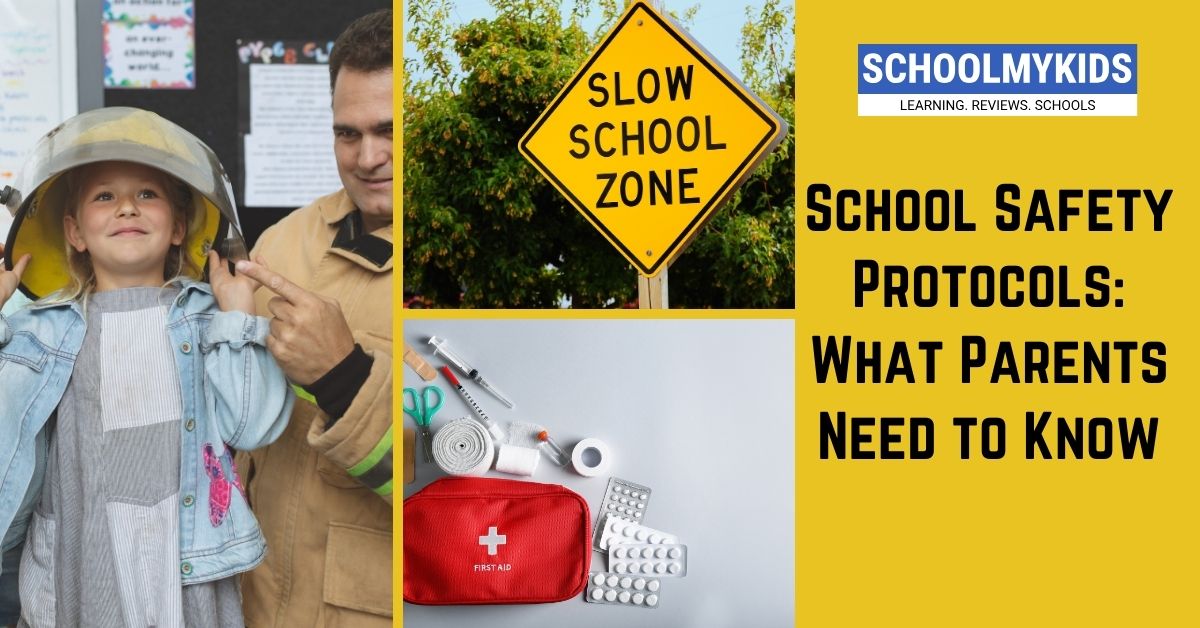As a parent, you might also wonder how safe your child is in the school environment, especially after considering some of the recent events and incidents. This is how many other people feel. However, school safety is a major concern among educators, administrators, and policymakers striving to ensure that suitable protocols are developed and programs implemented for the protection of students as well as staff. In this article, we will walk you through the various types of school safety protocols and ways in which you, as a parent, student, or even teacher, can collaborate with children to maintain a safe learning environment.
Understanding School Safety Protocols
School safety protocols are policies and practices that focus on the prevention, preparation for, and response to various incidents of emergencies in schools. They are aimed at ensuring the physical and mental health of students and staff, as well as limiting disturbances in the educational process. There are three main categories of school safety protocols: emergency response protocols, security policies, and communications in emergencies.
Emergency Response Procedures
The emergencies are spontaneous and may occur at any time, in different ways. Among the emergencies that schools may encounter are fire, lockdown, an active shooter bomb threat, an earthquake, a flood, or a pandemic. Every type of emergency necessitates a particular protocol that defines the position and duties, actions, and precautions to be undertaken by students, staff members, and first responders. However, schools periodically perform drills and practices to validate these protocols as well as address their weaknesses or challenges.
As a parent, you need to stay updated about the emergency procedures in school and encourage your child to learn them. You can do this by:
- Keeping track of links to resources connected with school links or even conversations about the protocols and their motivation in a Q&A session.
- At home, review the protocols with your child and address their concerns or questions.
- Practicing the protocols at home, for instance, recognizing escape routes and assembly points, and staying calm while doing drills.
Security Measures
The security measures refer to the physical and behavioural approaches used by schools. These measures include:
- Secured entrances and exits to monitor visitors sign in and out as well as use ID badges.
- Alarms and cameras, which detect an activity that is suspicious or unauthorized by the school.
- Visitor protocols include adherence to school rules and respecting the culture of that particular school.
- Prevention of bullying and harassment, which targets sensitisation among students and workers on the signs
- Mental health services: counselling, guidance, and referrals to students and staff facing stress, trauma, or other forms of emotional conflict.
As a parent, you can help enhance the security of your child’s school by:
- Fostering a relationship of open communication with your child that allows them to discuss his or her concerns regarding issues at school, including bullying, harassment, and peer pressure,.
- Being alert and reporting any suspicious or inappropriate behaviour or activity that you witness or hear about to the school authorities or law enforcers.
- Using the mental health care and support systems available to you and your child, as well as enlisting professional services when they become necessary.
Communication During Emergencies
Emergency communications define the process of informing and updating parents, students, employees, and citizens on the current state and changing dynamics in an emergency. However, the primary role of communication is to ensure that everyone is safe and secure, as well as to avoid misinformation and panic. Schools use various methods of communication during emergencies, such as direct and immediate notification to parents or staff through phone calls, text messages, e-mail, etc. Some of these methods are:
- Emergency notification systems that send messages through automated devices and technology like cell phones, landlines, social media platforms, or websites.
- Media platforms, which broadcast or publish official statements and updates from the school or the authorities.
As a parent, you can facilitate effective communication during emergencies by:
- Ensuring up-to-date and correct contact information is provided to the school as well as an emergency notification system.
- Ensure that the family emergency communication plan contain alternate contacts, recovery modes, and reunion procedures.
- After the school’s or other mandating parties requirements and regulations are followed, make sure that neutral information should only prevail without rumours being spread around.
Practicing safety procedures
Another way to ensure the safety and well-being of your child in school is by practicing the school’s emergency procedures with them. You can do this by:
- Reviewing the school’s emergency response protocol at home and make sure your child is well aware of what it is.
- When talking about escape routes and places of gathering in case emergency situations occur, let your child know how to get there safely.
- Practicing staying calm and following the instructions during drills, giving feedback to your child, or offering words of encouragement.
Building School Community
Finally, the other thing that can be done to ensure your child’s safety and well-being at school is creating an effective and good community in his or her school. You can do this by:
- By observing school safety meetings and events, as well as being aware of and communicating his or her involvement in the plans created regarding the issue
- Offering free time and skills to aid school safety initiatives, like fundraisers, mentoring programs, or organizing activities.
- Engaging with other parents to identify common issues and concerns, as well as build a support network aimed at advocacy.
Conclusion
Although school safety is a multi-layered and quickly evolving concern, it necessitates the efforts of parents, pupils, and educational institutions. By knowing the school’s safety policies, collaborating with your child, and creating a community-like environment for learning at all levels of education, you can make sure that everyone in school is safe.









Be the first one to comment on this story.